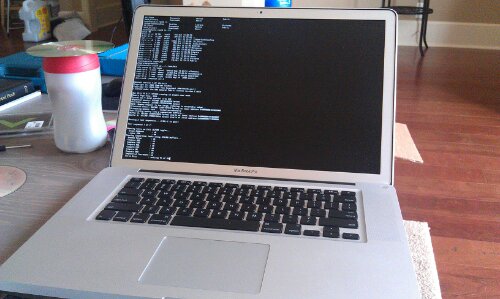I started programming over 20 years ago on an old Macintosh II computer that my father practically fished out of the trash at his job.
I largely credit that old computer to where I am today — it wasn’t just the Macintosh’s ease-of-use and small learning curve, it was also, literally, the spirit of the designers and tinkerers that worked at Apple computer that existed in that machine.
The Macintosh was a computer that you could delve beneath the surface, when you wanted to — you could modify code, the way applications worked, the modules and extensions that started up when the machine booted — you had, when you wanted to, access to all the tools that the designers themselves used to create that very Macintosh you were using right then and there.
There’s a whole generation of programmers who got their start in this very way, and for that, I do have Apple to thank.
CELEBRATION OVER, CRITICISM BELOW:
And that’s the very reason why Apple’s current practices today kinda scare me. Apple’s products today are precisely not about giving the user tools and control — with each new version of MacOSX, each new iPhone that comes out, there’s less and less that tinkerers like me can do with it.
There’s less and less that the next generation of tinkerers can do with it. How would the next Steve Jobs design anything on an iPod Touch? On an iPad? How would a budding application developer get anyone to use a new application he’s designed, when people can only install apps via a curated, policed, application “store?”
I thank Apple for starting me on the path to where I am today, but I thank companies like Google for keeping that spirit alive, when it becomes increasingly evident that Apple either isn’t able to or just no longer wants to.



 After six months or so of being wowed by a little portable scanner in a doctor’s office, the spouse and I finally decided to buy one. I wanted one that’s compatible with Ubuntu, since that’s our main OS around home, so I did a little research, and found some info about the Plustek Opticslim m12 (it’s the same model that the “NeatReceipts” company rebrands for their own scanners).
After six months or so of being wowed by a little portable scanner in a doctor’s office, the spouse and I finally decided to buy one. I wanted one that’s compatible with Ubuntu, since that’s our main OS around home, so I did a little research, and found some info about the Plustek Opticslim m12 (it’s the same model that the “NeatReceipts” company rebrands for their own scanners).